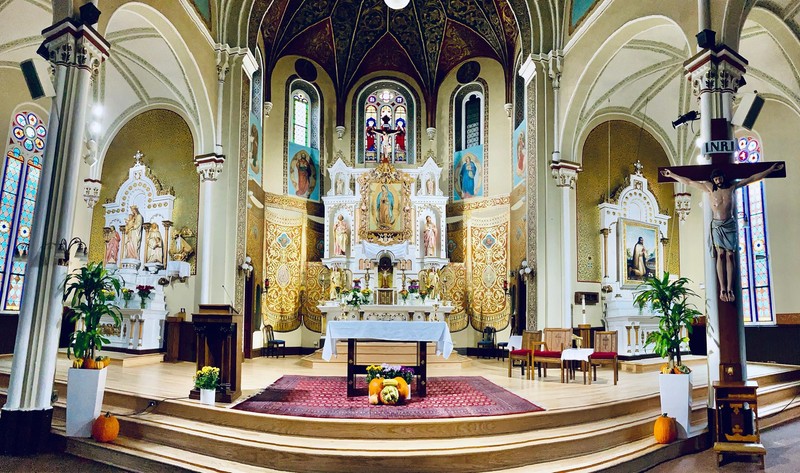St. Procopius Church
Introduction
Text-to-speech Audio
St. Procopius Church was founded in 1875 in the Chicago neighborhood of Pilsen. Located on 16th Street and Allport Street, the church is a community landmark. The area became home to Czechoslovakian immigrants, and almost all were Catholic which led to the founding of St. Procopius, honoring the Czech saint of Sázava, a Bohemian and hermit. Throughout the past century, the church’s demographics have changed to primarily Latino congregants and today mass is offered in English and Spanish. The congregation is a center of the community and members participate in many of the neighborhood’s festivals, such as Fiesta del Sol and Pilsen Lunada.
Images
St. Procopius Church Entrance


Backstory and Context
Text-to-speech Audio
With the influx of Catholic immigrants in the 1870s, church leaders in Chicago organized to better meet the needs of the neighborhood of Pilsen. Father William Coka organized a committee to help raise funds and establish St. Procopius. The committee bought a wood frame church and moved the structure to 18th and Allport. Father Coka was the church’s first pastor. The congregation soon outgrew the wood church and the congregation built a new church next to the original structure which was converted into a school.
In the 1940s and 1950s, there were thirteen Slavic churches in Pilsen, including St. Procopius. Their ethnic identity was still very strong, and according to Kanter, before their Sunday reception and dinner, Catholics would “[sing] the Star Spangled Banner and Kde Domov Muj, the Czech anthem.” In the 1960s and 1970s, Mexican families moved into the area. Many hesitated to join the existing church communities, but after an unnamed parishioner of Pilsen offered thanks to the Virgin of San Juan de los Lagos (the Virgin Mary from that particular city), the new arrivals were made to feel more welcome.
As the neighborhood saw declining Slavic attendees and students, St. Procopius admitted Latinos into their school. In 1960, while only one-quarter of residents were Spanish-speaking, three-quarters of the children in Pilsen were Latino. Students were told that to help balance generational tension, young residents could help elderly neighbors in need.
Eventually, as Latino populations continued to increase, the church accommodated their traditions by presenting the Guadalupe image of the Virgin Mary so that devotees could leave offerings, such as the Our Lady of Guadalupe Garden that is present even today.
Generations of Latinos have found St. Procopius to be a cornerstone of their community in recent decades. Many graduated from their private school, whether it be the elementary school still open today, or the private girls’ school which closed in the 1980s. Today, many are now confronted with gentrification and another change in ethnic identity. It is, once again, becoming a melting pot of Euro-Americans, African-Americans, and Latin-Americans. The church accommodates all, providing mass and other services in English and Spanish, and one session where both languages are utilized.
Sources
Kanter, Deborah . Making Mexican Parishes: Ethnic Succession in Chicago Churches, 1947-1977. U.S. Catholic Historian, ser. Inculturation, vol. 30, no. 135 - 58. Published 2012. JSTOR.
Saint Procopius, Orthodox Church in America. Invalid date. Accessed March 27th 2020. https://www.oca.org/saints/lives/2020/09/16/108950-saint-procopius.
Parish History, St. Procopius Providence of God. Accessed March 27th 2020. http://stprocopiuschurch.org/about-us/parish-history/.
http://stprocopiuschurch.org/about-us/
